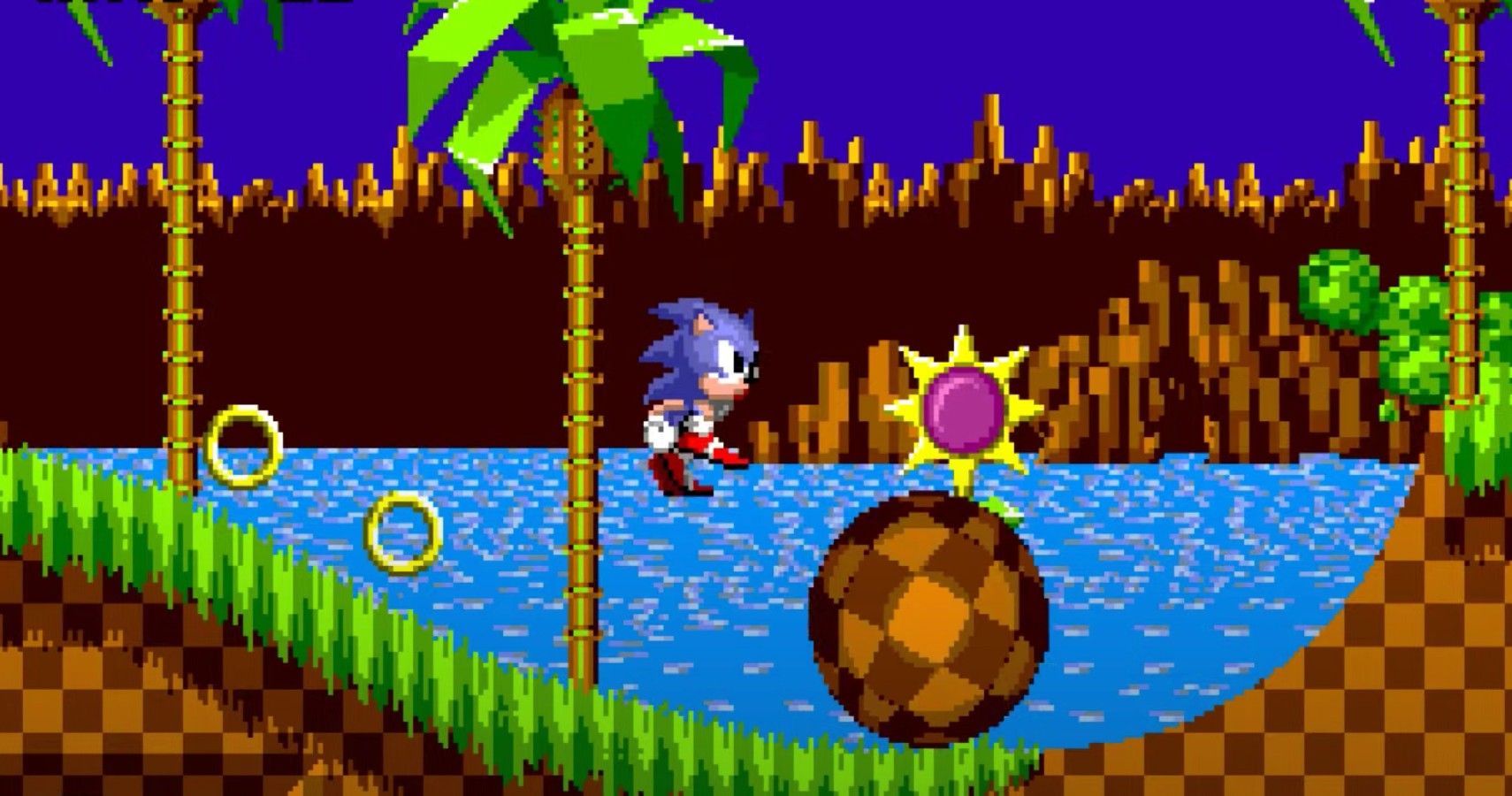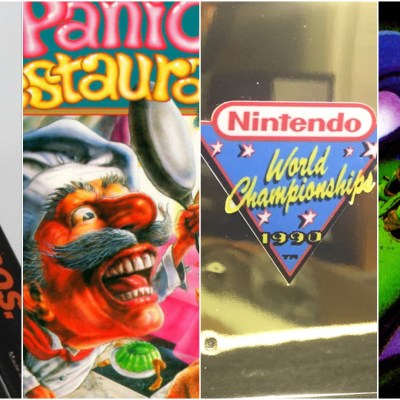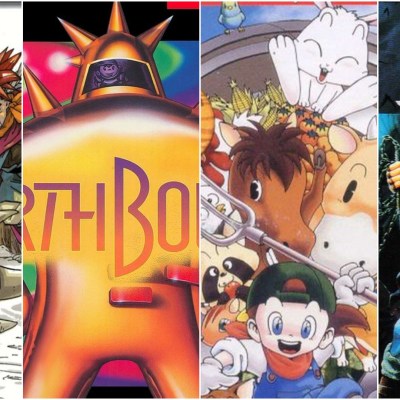As the average price of a modern AAA game goes from $60 to $70, gamers and industry figures everywhere start to wonder if anything can be done to lower the costs of inflating modern development budgets and help reduce prices in the process. Of course, if you think the prices of major modern games are getting a bit ridiculous, you should really check out what’s happening with retro games.
You may have heard the recent news about an unopened copy of Sonic the Hedgehog that sold for over $400,000 (and how even Sonic creator Yuji Naka thought it was a scam). Believe it or not, that sale was actually on the lower end of high-value retro game deals, as shortly before that sale occurred, a sealed copy of Super Mario Bros. sold for an insane $2 million.
Given such ludicrous prices, one can’t help but wonder what is happening in the retro gaming market. Why are some old video games suddenly selling for the cost of a miniature mansion? While there are quite a few complicated factors contributing to the current situation, here are a few of the major reasons even casual collectors are spending more on retro games than ever before.
Out of Print, Out of Luck
This kind of goes without saying, but game publishers aren’t producing retro games anymore. The number of old game cartridges and discs out there will never increase. That produces a natural scarcity that, in many cases, drives up prices over a long enough period of time. Furthermore, physical media has a tendency to degrade. For instance, the screens of Game Boys fade and blur over time. Add in the sad fact of failing capacitors, and the number of properly working Game Boys decreases every year.
Consoles aren’t the only victims, though. Cartridges occasionally stop working for any number of reasons, and even game discs can essentially rot and become completely unreadable. As more and more retro games and hardware inevitably die, the remaining copies naturally increase in price due to their inherent rarity.
Furthermore, physical game media is becoming more of a novelty across the board. Statista has chronicled an ever-increasing number of digital game sales, and games analyst Daniel Ahmad predicted that trend will continue in subsequent years.
However, that doesn’t mean companies have abandoned physical media. Gamers can still buy game discs and cartridges if they want, but why bother given the sheer convenience of a digital storefront? Well, it’s because some people just want physical copies. During a discussion between Matt and Wes of Nerdthusiast, Wes stated that he views digital games as worthless. Many gamers share this opinion, and so long as some people place value on physical media, it will always have monetary worth. That’s just how the market works.
However, Matt and Wes raised a pertinent point: The more studios rely on digital distribution, the fewer physical copies they will print. These rare discs and cartridges will naturally increase in value when digital storefronts inevitably close or games are delisted. The fewer ways to play a game, the more valuable the remaining ways become.
The Retro Gaming Market Was Impacted by the Covid-19 Pandemic in Several Ways
Odds are you know someone who discovered a new hobby during the Covid-19 pandemic, thanks in no small part to the influence of stimulus checks. Those who were fortunate enough to be able to treat those checks as disposable income suddenly found themselves with an influx of spare cash to go along with some additional at-home free time. When idle hands have more money to burn, they tend to spend it on a variety of hobbies and interests. It turns out a somewhat surprising number of people chose to spend their stimulus cash on old video games.
Video games (along with bread baking, gardening, and adopting a new pet) were one of those things that a lot of people turned to during the Covid-19 lockdowns, even if they hadn’t previously invested that much time in money into those activities in recent years. Unfortunately, those lockdowns coincided with the debut of the newest console generation. In an effort to help prevent the spread of Covid-19, console manufacturers (and the manufacturers of console components) cut down on output. Since gamers couldn’t reliably purchase the latest Xbox and PlayStation consoles, many set their eyes on retro games due to both nostalgia and the relative availability of various pieces of retro hardware and software (at least at one time).
According to the personal experiences of Matt and Wes of Nerdthusiast, retro games flew off the shelves once COVID hit (or at least after stores reopened). During that time, Matt worked at a GameStop, and he claimed the company couldn’t give Nintendo Wiis away before the pandemic. His GameStop had so many spare Wiis that they refused to buy any more off customers, yet come the first holiday season of the pandemic, his store sold out of Wiis. More importantly, as stocks dwindled, prices rose (which is the nature of supply and demand).
Indeed, Wiis now commonly sell for around $100 (assuming you can find one). Admittedly, $100 isn’t much for a console, but again, GameStop previously had trouble selling the things at all. Now, the company has trouble keeping them in stock.
That’s really the biggest takeaway here. There were many factors that caused people to turn to retro video games during lockdowns, but for the moment, it’s enough to know that prices for retro gaming hardware and software rose during lockdowns while the stock of those same items drastically dwindled. Even if the retro gaming market was trending in that direction before 2020, the events of the last couple of years have only accelerated that trajectory.
Read more
Some High-End Retro Gaming Auctions May be Part of a Massive Speculation Scam
Nearly every time a sealed copy of a retro game sells for record prices, another copy fetches an even higher price. Normally, that could just be written off as auction houses competing to one-up each other in a bid to make it into the Guinness Book of Records. However, most of those record-breaking sales happened at the same auction house, which is the kind of thing that should raise red flags.
In 2017, one buyer purchased a sealed copy of Super Mario Bros. for over $30,000, but in 2021, someone else bought another mint-in-box copy for $660,000. Why did the latter fetch a significantly higher price? Because it was graded highly by WATA: a professional service that grades the physical quality of retro games. That company would later grade a copy of Super Mario 64 that sold for $1.5 million, as well as yet another sealed Super Mario Bros. cartridge priced at over $2 million. Nearly everyone was shocked by those deals, but some suspected that those transactions represented something darker than the actual value of those titles and a sudden renewed interest in retro gaming.
Investigative YouTuber and speedrunner Karl Jobst found some troubling facts about WATA and posted several concerning videos on the firm. WATA was co-founded by Jim Halperin, who also founded Heritage Auctions: the company that sold those aforementioned games. Halperin has experience in grading collectible items, although his reputation has been called into question over the years. He has been accused several times of “overgrading” coins (i.e., claiming they were worth more than they actually were) and has paid millions in restitution because of it.
That history calls Halperin’s companies into question, but it gets worse. According to Jobst, Heritage Auctions collects 20% of the sale as a “Buyer’s Premium,” and whenever WATA grades a game, the company collects more if the item is valued higher. The result, at least according to Jobst, gives Heritage and WATA additional incentive to intentionally overvalue games in order to collect more money.
According to Jobst’s research, the current state of the highest tiers of retro video game prices is partially the result of a dishonest, WATA-fueled speculator bubble. The company values games exceedingly high, and people who want to make a ton of money buy up as many copies as they can and then sell them at prices reflective of WATA’s claims. Eventually, that practice drives up the prices for other retro games.
If WATA and Heritage Auctions are the ones responsible for selling games for record-breaking prices, who do you think all those speculative buyers will come to in order to have their games graded and sold? Probably WATA and Heritage, thus earning them even more money. One of Jobst’s sources who even claims to have worked for Heritage Auctions allegedly witnessed Halperin himself post several “shill bids” (i.e., fake bids) to help drive up item prices. Admittedly, that source only saw Halperin do that with comics, but it’s another in a series of accusations that call the integrity of the high-end retro game grading and auction process into question.
Between that possibly artificially inflated investment bubble at the highest ends of retro game collecting, the ways the Covid-19 pandemic affected the retro game market, and the natural scarcity of many retro games over a long enough period of time, it’s easy enough to see how we got where we are. The big question at the moment is, “Where does the retro games market go from here?”


